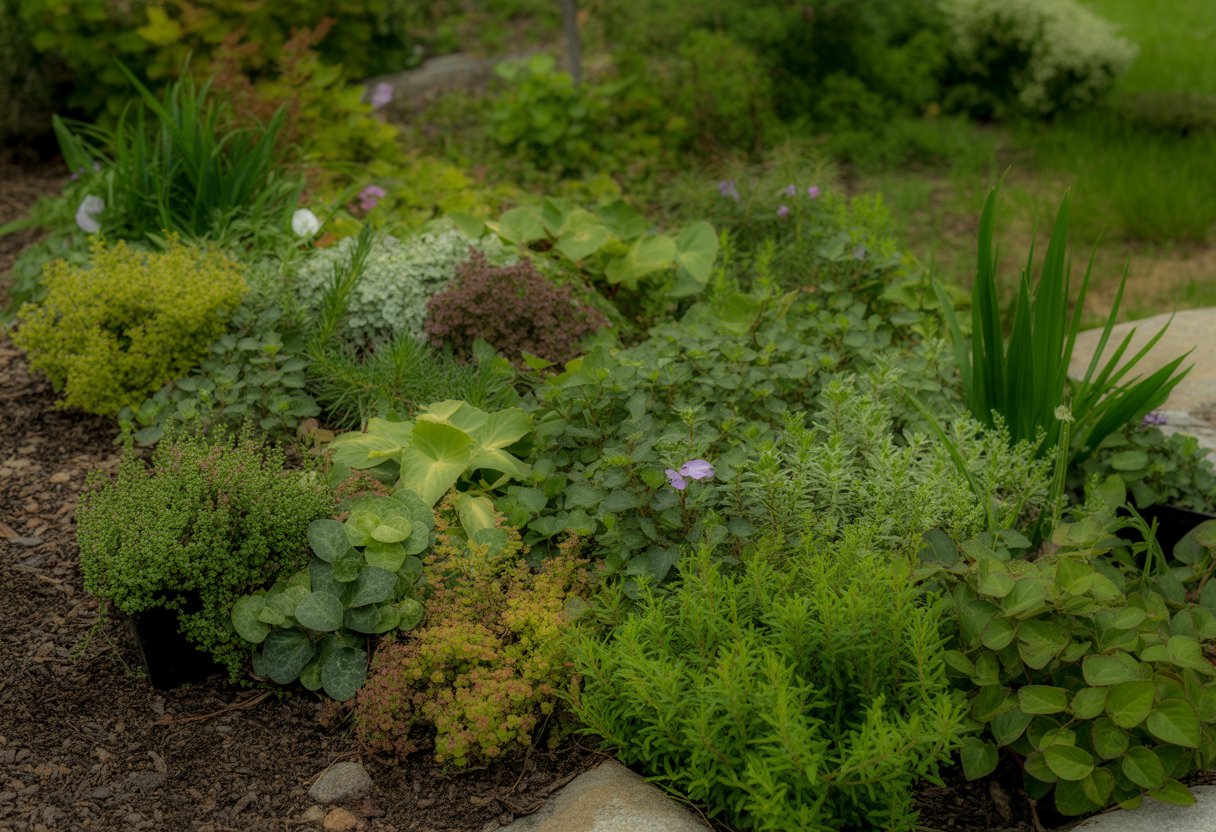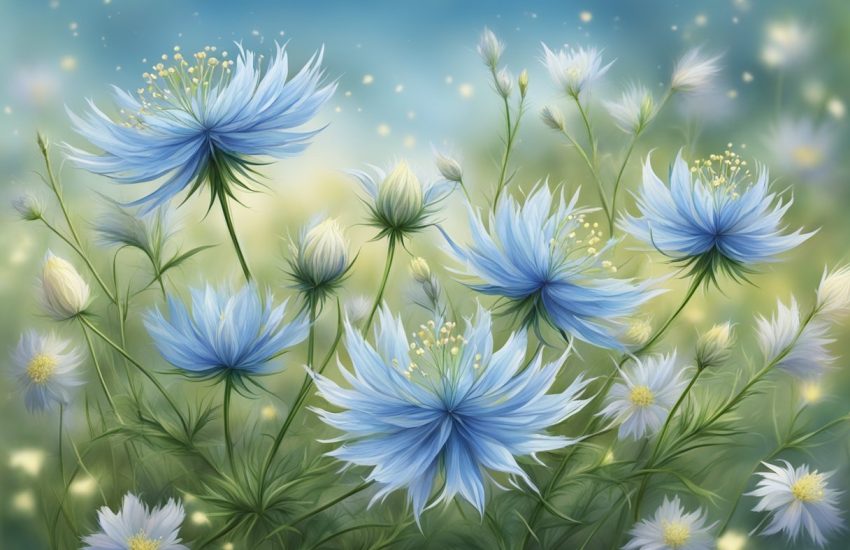Best Ground Cover Plants for New Hampshire: Top Choices for Durable and Low-Maintenance Gardens
Ground cover plants really matter in New Hampshire gardens. They help control erosion, keep weeds down, and honestly, they make the place look a whole lot better.
Picking the right species for the region’s climate and soil is key. If you get that wrong, you might end up replanting every year.

The best ground cover plants for New Hampshire include creeping phlox, bearberry, and pachysandra. These plants handle cold winters, unpredictable soil, and require almost no fuss.
They offer coverage through all four seasons. Most gardeners appreciate how little maintenance these options need.
Each plant has its own quirks—sunlight needs, growth habits, and all that. Getting to know these details helps you match the right plant to the right spot.
This guide focuses on plants that are tough yet good-looking for New Hampshire landscapes.
Top Ground Cover Plants for New Hampshire

New Hampshire gardens need ground covers that can handle chilly weather, especially those that survive in USDA Zone 5. Traits like evergreen leaves, shade tolerance, or low growth really make a difference.
Best Flowering Perennials
Flowering perennials such as Nepeta (catmint) and Phlox subulata (creeping phlox) do well in Zone 5. Creeping phlox gives you a carpet of color in spring and doesn’t mind full sun or partial shade.
Catmint bursts with lavender-blue flowers and gets by just fine when it’s dry. Once it’s settled in, it’s pretty tough.
Ajuga reptans (bugleweed) brings spikes of blue flowers and glossy leaves. It grows fast, covers bare spots, and doesn’t mind a bit of shade.
These perennials pull in pollinators and add some biodiversity to your garden.
Evergreen Groundcover Options
Evergreen groundcovers keep things interesting all year. Vinca minor (periwinkle) trails along with shiny leaves and blue flowers in spring.
It prefers shade but can take a bit of sun. Pachysandra terminalis handles deep shade, holding onto its glossy green leaves through winter and spreading out steadily.
Juniperus horizontalis (creeping juniper) likes sunny spots. Its low, spreading branches and needle-like foliage add a splash of winter color.
Shade-Loving Ground Covers
For those shady corners, Hosta varieties and Tiarella cordifolia (foamflower) come in handy. They’re perfect under trees where sunlight barely makes an appearance.
Hostas bring lush leaves and spread slowly, so they won’t take over. Foamflower pops up with white or pink blooms in spring and doesn’t mind damp, shady soil.
Lamium maculatum (deadnettle) adds variegated leaves and tiny flowers that pollinators like. These plants cover soil in the shade and help keep erosion in check.
Low-Growing Varieties for Borders
If you want neat borders, try Sedum species or Thymus serpyllum (creeping thyme). Sedum doesn’t care if the soil’s poor or if it’s a bit dry, and those star-shaped flowers are a nice bonus.
Creeping thyme stays short—under 6 inches—smells great, and blooms purple in summer. It even survives a bit of foot traffic and draws in bees.
Both types keep weeds at bay and give your garden edges a tidy look.
Standout Species and Varieties
Some ground cover plants really shine in New Hampshire’s climate. You’ll find a variety of textures and colors, from dense mats to bursts of flowers.
Picking the right one often depends on your garden’s quirks and what you want to see out there.
Ajuga and Other Spreading Options
Ajuga, or bugleweed, spreads fast and forms a thick mat. It prefers some shade and moist soil, which matches up well with many New Hampshire yards.
Ajuga reptans gives you deep blue flower clusters in spring. The glossy, sometimes variegated leaves look great even when it’s not blooming.
Lungwort pairs nicely with ajuga. It has spotted leaves and pale blue or pink flowers, spreading moderately in shady, well-drained areas.
Both options help with erosion and fill those tricky spots under trees.
Hostas for Versatile Coverage
Hostas are just plain reliable when it comes to shade tolerance. They thrive in cool climates and well-draining soil.
You’ll find all sorts of cultivars—some with variegated leaves in greens, creams, or yellows. Even without flowers, they look interesting.
In summer, hostas send up spikes of white or lavender flowers. They grow slowly but fill in under trees and shrubs, and they’re less likely to get eaten by deer than other ground covers.
That’s a relief if you’re gardening outside the city.
Creeping Thyme and Aromatic Choices
Creeping thyme is a favorite for sunny spots that need low, aromatic ground cover. Poor soil and drought don’t bother it much, which is perfect for exposed areas.
The tiny, gray-green leaves look good in flower beds and rock gardens. In summer, creeping thyme puts on a show with clusters of purple or pink flowers.
Pollinators love it, and it smells fantastic when you brush past or walk on it. It’s a smart pick for filling gaps between stepping stones or as a lawn alternative in small, sunny spots.
Habitat, Maintenance, and Ecological Benefits
Ground cover plants in New Hampshire adapt to a range of conditions. They also give a boost to local wildlife.
Knowing what each plant needs—climate, care, and how they attract birds and pollinators—makes gardening a lot easier.
Adaptability to New Hampshire Climate
Most ground covers that work in New Hampshire handle cold winters and temperature swings. Creeping thyme and pachysandra do well in moist soil and shaded areas near trees.
Some types shrug off summer heat and dry spells, but most need steady moisture to get established. Matching your plant to the amount of sun or shade in your yard really helps.
Cold-hardiness zones 4 to 6 cover the region, so plants need to survive freezing winters. Flexible growing seasons are a plus, especially with New Hampshire’s unpredictable spring and fall.
Caring for Ground Covers
Ground covers usually don’t ask for much. A little pruning keeps them tidy and stops them from taking over.
Water them when it’s dry, especially the ones that love moisture. Mulching helps keep the soil damp and cuts down on weeds.
Plants near trees and shrubs might have to compete for water and nutrients, so give them enough space and maybe a bit of fertilizer now and then. Good soil drainage keeps roots healthy and prevents rot.
Drought-tolerant types won’t need as much water. Watch for pests and diseases—catching problems early means you won’t have to go overboard with chemicals.
Attracting Birds and Pollinators
Flowering ground covers like creeping phlox and wild strawberry bring in hummingbirds, bees, and butterflies. Their blooms provide nectar when not much else is flowering.
Dense leaves create shelter and nesting spots for small birds. Leaf litter under ground covers feeds insects, which in turn feed the birds.
Using native plants helps the local ecosystem thrive. Planting ground covers near shrubs and trees builds layers of habitat and increases biodiversity.
If you pick plants that bloom at different times, you’ll keep pollinators and hummingbirds coming back all season.
Important Considerations and Avoiding Invasive Plants

Choosing ground cover means thinking about how each plant behaves and its impact on the environment. The right choices protect local ecosystems and keep your garden healthy.
Selecting Non-Invasive Groundcovers
Non-invasive groundcovers stay where you plant them—they don’t take over the whole yard. Invasive plants, on the other hand, can crowd out native species and mess with the balance.
Plenty of invasive groundcovers come from Asia or Europe. English ivy and Japanese honeysuckle, for example, can smother trees and native plants in New Hampshire.
These species often thrive because they don’t have natural predators here. It’s smart to check with local extension services for lists of banned invasive plants.
Sticking with contained, well-behaved options like creeping phlox or bearberry keeps your garden safe and the surrounding habitat intact.
Comparing Native and Exotic Species
Native species really know how to handle New Hampshire’s soil and climate. They usually need less maintenance, water, and fertilizer compared to exotic plants.
Exotic species can look quite attractive and sometimes spread quickly. But let’s be honest, a few of them—especially those fast-growing vines from Asia or Europe—can get out of control and become invasive.
Table: Native vs. Exotic Groundcovers
| Aspect | Native Species | Exotic Species |
|---|---|---|
| Adaptation | Suited to local climate | May require more care |
| Environmental impact | Supports local wildlife | Risk of invasiveness |
| Maintenance | Lower | Often higher |
If you pick native groundcovers, you lower the risk of an invasive takeover. With exotic plants, it pays to stay alert and really consider how they might behave in your yard.


